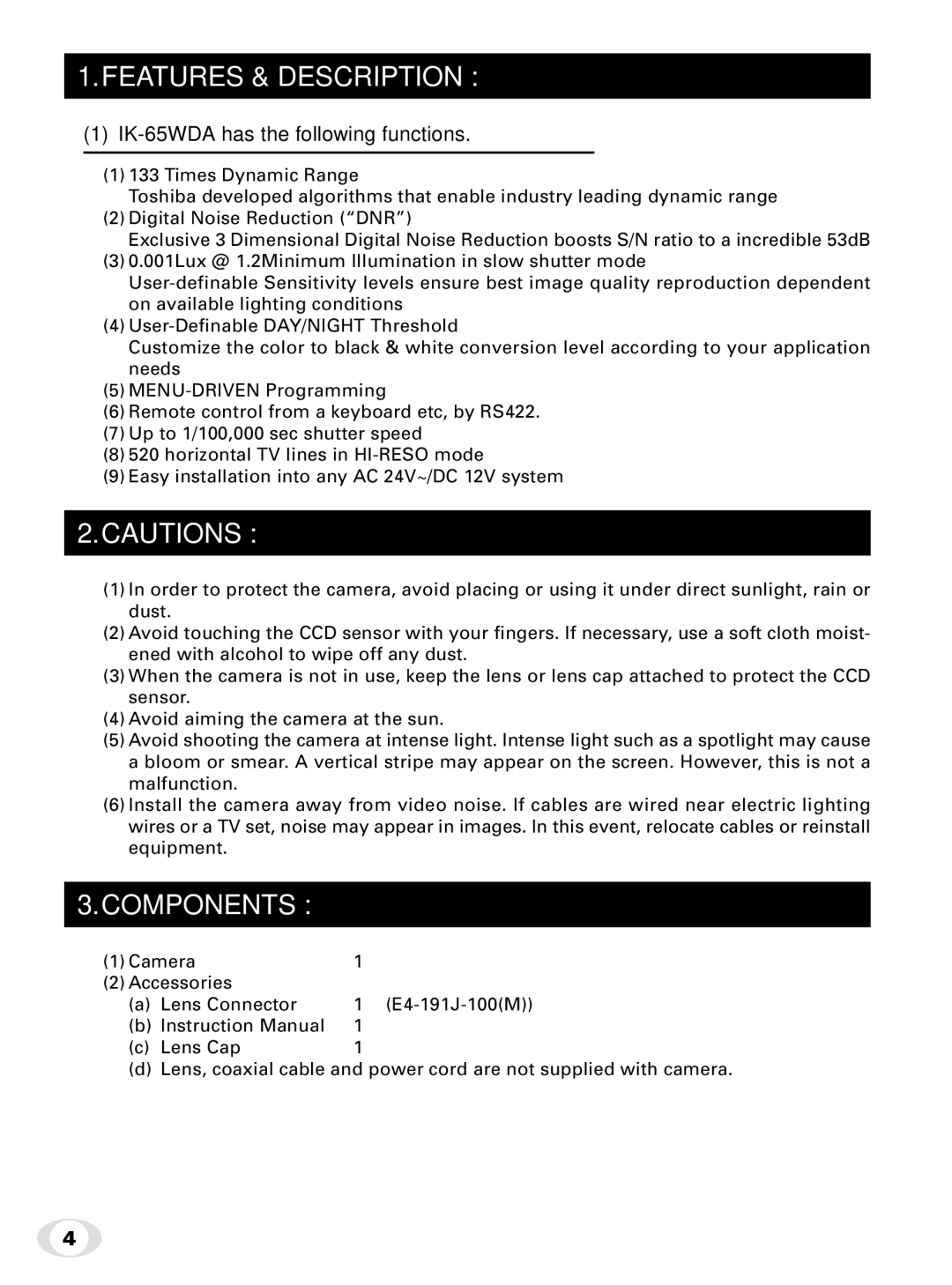
1.FEATURES & DESCRIPTION :
(1)IK-65WDA has the following functions.
(1)133 Times Dynamic Range
Toshiba developed algorithms that enable industry leading dynamic range
(2)Digital Noise Reduction (“DNR”)
Exclusive 3 Dimensional Digital Noise Reduction boosts S/N ratio to a incredible 53dB
(3)0.001Lux @ 1.2Minimum Illumination in slow shutter mode
(4)
Customize the color to black & white conversion level according to your application needs
(5)
(6)Remote control from a keyboard etc, by RS422.
(7)Up to 1/100,000 sec shutter speed
(8)520 horizontal TV lines in
(9)Easy installation into any AC 24V~/DC 12V system
2.CAUTIONS :
(1)In order to protect the camera, avoid placing or using it under direct sunlight, rain or dust.
(2)Avoid touching the CCD sensor with your fingers. If necessary, use a soft cloth moist- ened with alcohol to wipe off any dust.
(3)When the camera is not in use, keep the lens or lens cap attached to protect the CCD sensor.
(4)Avoid aiming the camera at the sun.
(5)Avoid shooting the camera at intense light. Intense light such as a spotlight may cause a bloom or smear. A vertical stripe may appear on the screen. However, this is not a malfunction.
(6)Install the camera away from video noise. If cables are wired near electric lighting wires or a TV set, noise may appear in images. In this event, relocate cables or reinstall equipment.
3.COMPONENTS :
(1) Camera | 1 |
|
(2) Accessories |
|
|
(a) Lens Connector | 1 | |
(b) Instruction Manual | 1 |
|
(c) Lens Cap | 1 |
|
(d) Lens, coaxial cable and power cord are not supplied with camera.
4
